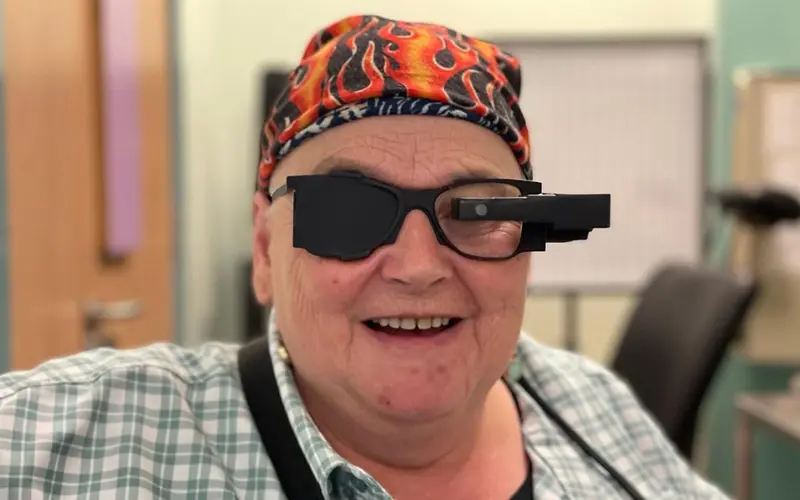Eye Implant Restores Reading Ability for Blind Patients
Wednesday, 2025/10/22336 words5 minutes2502 reads
A revolutionary retinal implant technology is offering renewed hope to individuals afflicted with advanced dry age-related macular degeneration (AMD), a condition that has long been considered untreatable. This groundbreaking innovation, developed by a California-based biotechnology firm, involves the surgical insertion of a minuscule photovoltaic microchip beneath the retina.
The implant, measuring a mere 2mm square and boasting a thickness comparable to a human hair, operates in tandem with specially designed glasses equipped with an integrated video camera. This symbiotic system captures visual information, which is then transmitted via an infrared beam to the implanted chip. Subsequently, the data is relayed to a pocket processor for enhancement before being sent back to the implant and ultimately to the brain via the optic nerve, effectively restoring a degree of functional vision.
In a landmark international trial, the results of which were published in the New England Journal of Medicine, 38 patients across five European countries participated. Of the 32 individuals who received the implant, an impressive 27 regained the ability to read using their central vision. After a year, this translated to an average improvement of 25 letters, or five lines, on a standard eye chart.
One of the trial participants, 70-year-old Sheila Irvine, who had been registered as blind, described her newfound ability to read and complete crosswords as 'out of this world'. Her experience underscores the potential life-changing impact of this technology for the estimated 250,000 people in the UK and five million worldwide who suffer from geographic atrophy, an advanced form of dry AMD.
While the Prima implant is not yet licensed for general use, researchers are optimistic about its future availability. Dr. Mahi Muqit, the consultant ophthalmic surgeon who led the UK arm of the trial at Moorfields Eye Hospital in London, expressed hope that the technology could be accessible to some NHS patients within a few years. This development represents a significant stride in the field of ophthalmology, offering a beacon of hope for those grappling with severe vision loss due to AMD.
